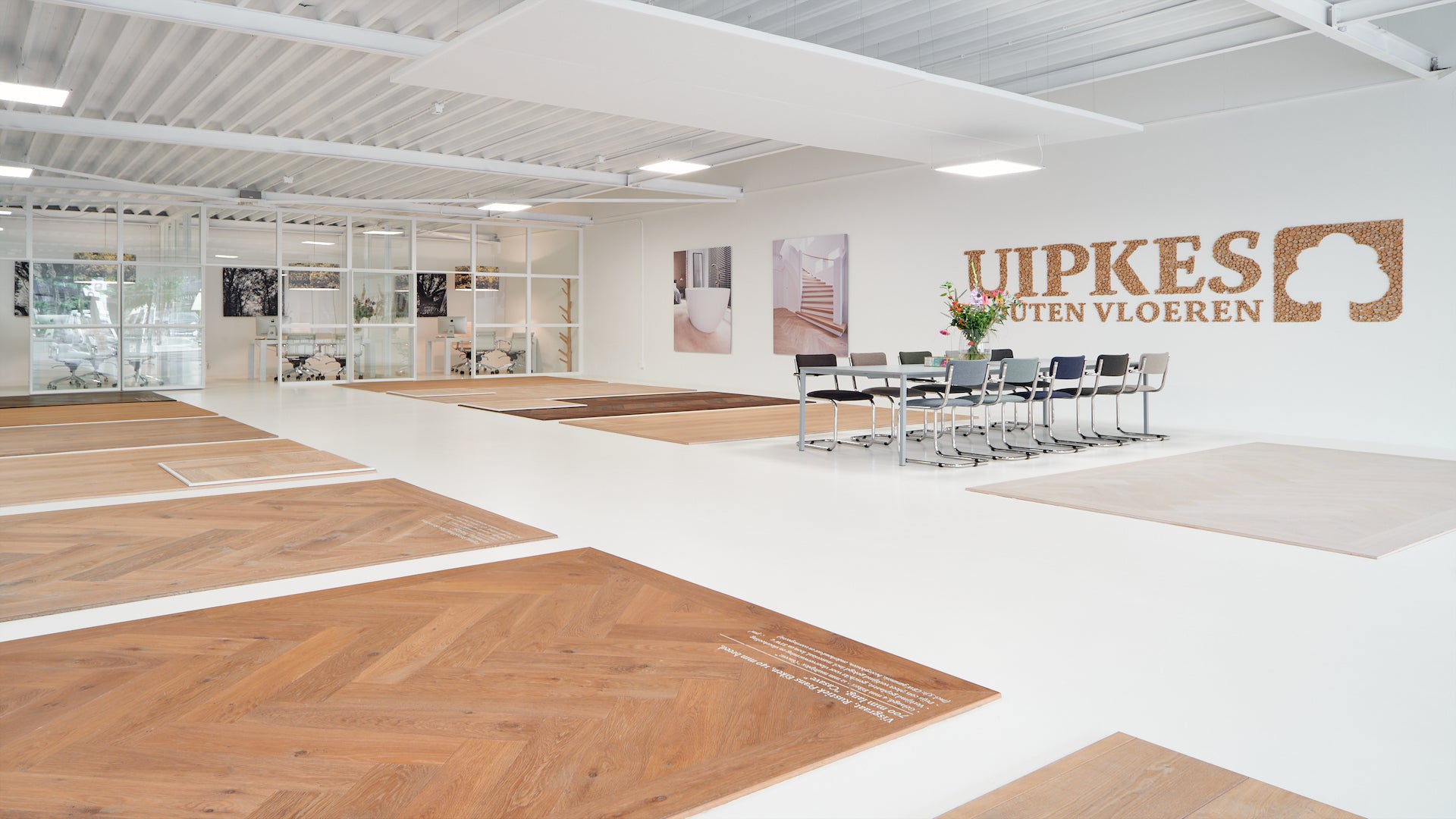Volumieke massa

Bezoek de showroom
Many materials are referred to as relative density or specific weight. This is the ratio of the mass of a given volume of that substance to the mass of the same volume of water. However, this quantity cannot be used well for wood because of the large variation in moisture content, which means that the mass of wood varies and the volume of wood is not always constant. When it comes to wood, we prefer to speak of volumimetric mass. This depends on the moisture content .
Magazine vol inspiratie
Moisture content
With changing moisture content below the fiber saturation point, both the volume and mass change. The volumetric mass also changes as a result. At moisture contents above the fiber saturation point, only the mass changes, the dimensions have become maximum and thus the volume.
In practice, the bulk density is given at a certain moisture content of, for example, 10%. The volumetric mass of wood varies greatly between wood species and within the wood specie , even within one tree significant differences can be observed.
Growth rings and volumetric mass
An old view that is still almost universal within the European timber trade is that for European timber wood species , narrow growth rings in coniferous species indicate relatively heavy wood, and in hardwood species, wide rings indicate these indications. However, there are many exceptions to the rule, so that the growth ring width cannot be used as an absolute measure of the bulk density, and therefore of the strength.
Bezoek de showroom
Influencing volumetric mass
- The type of wood: naturally, wood species have different volumimetrics masses. Hardwoods such as oak, maple and beech often have a higher density than softwoods such as pine, spruce and cedar.
- Growing conditions: The place and environment in which the wood grows has a significant influence on its density. Wood from densely forested areas, where trees compete with each other for sunlight and nutrients, will usually have a higher bulk density than wood growing in an open environment.
- Age of the tree: In general, the density of wood increases as the tree ages. The inner heartwood of older trees tends to be denser and heavier than the outer sapwood of younger trees.
- Growth Rate: Slower growing trees often result in denser, higher density wood. While rapid growth often leads to less dense wood.
- Season of Harvesting: Wood harvested in different seasons may exhibit variations in density. In general, wood cut in winter can have a higher density than wood cut in summer.
- Climate: The climate of the region in which the wood grows can affect its density. For example, dry climates can lead to denser wood, while humid climates promote lower-density wood.
Showrooms
-

Alphen a/d Rijn
Euromarkt 113
-

Amsterdam
Roelof Hartstraat 4
Frequently Asked Questions
What is volumetric mass?
Volumic mass, also known as density, is the amount of mass per unit volume of a material. It is often expressed in kilograms per cubic meter (kg/m³).
What is the average density of wood?
The density of wood varies depending on the type of wood. In general, the average density of wood is between 300 kg/m³ and 900 kg/m³. wood species tend to have a lower density, while hardwoods have a higher density.
Oak wood generally has a high density. The exact density of oak wood can vary depending on several factors, such as the specific oak species, growing conditions and moisture content of the wood.
In general, the bulk density of oak wood varies between approximately 600 kg/m³ and 1,000 kg/m³. This indicates that oak wood has a relatively high density compared to other wood species .
The high weight and density of oak wood generally makes it very strong, durable and stable. It is suitable for a wide range of applications including furniture, floors, stairs, structures, shipbuilding and parquet . Oak wood is also popular for its attractive appearance and ability to respond well to various finishing and processing methods.
Why is the bulk density of wood important?
The bulk density of wood is an important property because it influences the strength, durability and other mechanical properties of wood. It also determines the weight of a given volume of wood.
How is the bulk density of wood measured?
The bulk density of wood is usually measured by taking a sample of known dimensions and mass. The mass of the sample is then divided by its volume to calculate its density.
Are there differences in the volumetric mass between different wood species ?
Yes, there are significant differences in the density between different wood species . Influences on this include: growth conditions, wood structure, porosity and wood density. Hardwoods such as oak and mahogany generally have a higher density than softwoods such as pine and cedar.
How does the bulk of wood influence the behavior of wood?
The density of wood influences various properties and applications of wood. Here are some ways that bulk density affects the behavior of wood:
- Strength and durability: In general, wood with a higher density is stronger and more durable. It can bear more weight and be more resistant to bending, breaking and wear. Therefore, higher density wood is often used in construction applications where strength is important.
- Stability: Wood with higher density generally exhibits less shrinkage and expansion due to moisture changes. It tends to remain more stable and less susceptible to deformation or cracking caused by humidity changes. This makes it more suitable for applications where dimensional stability is important, such as flooring, furniture and veneers.
- Sound Insulation: Wood with a higher density tends to absorb and insulate sound better. Therefore, it is often used in the construction of sound insulation panels, doors and floors.
- Thermal insulation: Wood with a lower density can have better insulating properties, making it suitable for applications where thermal insulation is desired, such as wall cladding or insulation material.
- Workability: Lower density wood can be easier to work with because it is softer and less resistant to cutting, sawing and planing. This makes it more convenient for finer operations, such as wood carving or furniture production.

